
Check out a simple video that illustrates the Earth's rocks and minerals. [3:34]
- Subject:
- Mathematics
- Science
- Material Type:
- Audio/Video
- Provider:
- Science for Kids
- Date Added:
- 10/01/2022

Check out a simple video that illustrates the Earth's rocks and minerals. [3:34]

Kids will have clarity in understanding the differences between solids, liquids, and gases. They Might Be Giants perform a catchy tune to help. [1:22]

Ooo. Ahh. Who doesn't like a fireworks show? This video will detail the science behind fireworks from the explosives to the colors. [5:04]

Find out about Ernest Rutherford, the father of nuclear physics. He made a range of important contributions to this field and also won a Nobel Prize in 1908 for his work in chemistry. [1:28]

Science NetLinks is a premier K-12 science education resource produced by the American Association for the Advancement of Science. At Science NetLinks, you'll find teaching tools, interactives, podcasts, and hands-on activities, and all of it is free!
Science NetLinks provides K-12 teachers, students, and families with quality resources for teaching and learning science.
All of the resources are Internet based and free to everyone. Lessons and activities can be printed or used online. Many of the interactives, esheets, and tools work great on an interactive white board or in a computer lab. All of the resources are designed to be delivered in a variety of formats and classroom settings.
Science NetLinks' role is to provide a wealth of standards-aligned resources for K-12 science educators, including lesson plans, interactives and reviewed Internet resources. Science NetLinks is a dynamic site with new content being added on a regular basis, so check back often
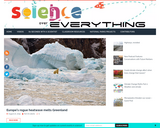
Science Over Everything is a blog dedicated to helping middle and high school students understand current events in science and why they are relevant to their daily lives. Our site is intended to be a resource for teachers, providing each blog post with classroom activities to help the students comprehend what they are reading and fit the articles in a school's curriculum.

This activity is a field investigation of puddles where students gather data and record their findings.
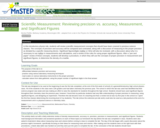
This is an introductory physics lab where students will review scientific measurement concepts, and then develop a procedure, in which they will use the concepts of proper precision in measurement and significant figures, to determine the density of a marble.

This activity is a lab investigation where students collect and analyze data on towers built with various components and compare the two.
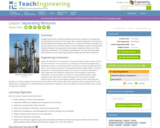
Students learn how to classify materials as mixtures, elements or compounds and identify the properties of each type. The concept of separation of mixtures is also introduced since nearly every element or compound is found naturally in an impure state such as a mixture of two or more substances, and it is common that chemical engineers use separation techniques to separate mixtures into their individual components. For example, the separation of crude oil into purified hydrocarbons such as natural gas, gasoline, diesel, jet fuel and/or lubricants.

This lab is a two part investigation on separating a solid from a liquid where students are asked to develop their own investigable question and carry out the experiment on day two.
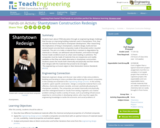
Students learn about STEM education through an engineering design challenge that focuses on improving building materials used in shantytowns. First, they consider the factors that lead to shantytown development. After researching the implications of living in shantytowns, students design, build and test cement-based concrete block composites made of discarded and/or recycled materials. The aim is to make a material that is resistant to degradation by chemicals or climate, can withstand natural disasters, and endure through human-made conditions (such as urban overcrowding or pollution). The composites must be made of materials that are inexpensive and readily available so that they are viable alternative in shantytown communities. Students assess the results both chemically and physically and then iterate their designs with the materials that proved to be strongest.

This chemistry lesson uses Sharpie Markers, rubbing alcohol and t-shirts to make a exciting tie-die looking t-shirt

This article, written for students in grades 4-5, introduces the concept of albedo and describes the shrinking of Arctic sea ice. Modified versions are available for students in younger grades.

In this adapted ZOOM video segment, cast members calculate how much water they each use during a typical shower. They compare their results to their original predictions.
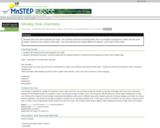
This activity is a hands-on activity where students learn about polymers and the science of plastics, while making shrinky dinks.

Student teams make polymers using ordinary household supplies (glue, borax, water). They experiment with the semi-solid material when warm and cold to see and feel its elastic and viscous properties. Students will begin to understand how the electrical forces between particles change as temperature or the force applied to the substance changes. Is it a solid, a liquid, or something in between? How might it be used?

This video segment from IdahoPTV's D4K lists, describes and shows examples of the 6 simple machines and how they make work easier.
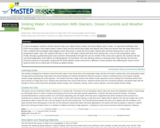
This lesson has activities where students will learn about buoyancy and explore how hot water rises and cold water sinks. As an extension and real-life application, students will see that glacial run-off is occurring at a rapid pace and the cold glacial water could potentially change ocean currents thus influencing global climates.
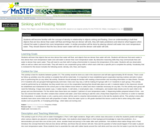
This activity is a classroom lab where students learn that cold water is denser and hot water is less dense than room temperature water. Students perform an experiment and relate to their background knowledge to make conjectures.